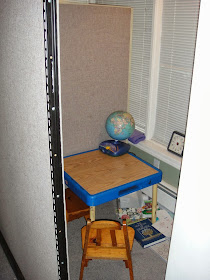I really enjoy the book Ido in Autismland, a collection of
essays written by Ido Kedar, a non-verbal autistic boy who wrote about his
experience of being autistic between the ages of 12-15. It was the first book I read that resonated
with how I felt my son to be like. Ido
got his start in communication through Soma’s RPM. I have since bought many copies of the book
to give to family and friends so they could understand Philip better.
In August, my in-laws came to visit from Albuquerque, New
Mexico. They both read the book while
they were here. After my father-in-law
read Ido’s essay “Trust, Aura, and
Communication” he wondered if Philip also sensed people’s auras. In the book, Ido talks about how people give
off a colored glow which, depending on the color, causes him to be either
relaxed or tense. This, in turn, affects
his ability to point and communicate with people with his letterboard. When he is relaxed, he is better able to
communicate.
I decided to ask Philip about this. I didn’t bring up auras, but instead asked
him if different colors could be used to explain certain personalities. “Y,” he answered. Together we came up with a list of colors and
corresponding personalities and people who might fit that color. Philip’s responses are in CAPS.
Red: ANGRY
Blue: CALM- MOM, ANA, SOMA, NELSON
Yellow: EASY GOING- CARLOS, LIA, ME (Philip)
Orange: FRIENDLY- GRAMS, TOMMY, KIANNE
Green: ENVIOUS “Who’s green?” I asked. ANY PERSON.
“You mean any person at some time can be green?” Y
Purple: ROYAL- LOLA, DAD “Why would you say they are
purple?” I asked. THEY ARE IN CHARGE.
I’ve since noticed the connection between the “blue”
personality and Philip’s ability to spell well with them. One time my older two kids Ana and Carlos
were sitting with Philip at our table while I held the board as they talked
with Philip. Ana asked, “Why can you only spell with Mom holding the
letterboard?” “SHE IS PATIENT,” spelled Philip.
“If I practice with you, would you be able to spell with me too?” Ana
asked. “Y.” “What about me?” asked Carlos. “N,” answered
Philip. Just so you know, Carlos is not
known for being patient. However, since
that conversation in August, I have noticed Carlos becoming more patient and
bonded to Philip. I believe it is
because Philip has gotten better in communicating. It would be interesting to see if Philip
still feels the same way.
Though some people are more naturally patient than others, I
think everyone can cultivate this quality.
Here is a case in point. I have
two friends, Nichole and Debbie. To me
they are very orange and outspoken. In
fact neither would call themselves calm or patient. However, they have always paid special
attention to Philip and treated him as a regular kid. When I told them about Philip’s color-personality
link, they excitedly wanted to know what color they were. For each one, Philip spelled “BLUE.” We
determined it was because they were patient with him and he felt calm around
them.
Today I asked Philip if we could talk about patience. “Y.” I read to him some definitions of patience in
the dictionary. Then I asked him how he
would define patience. “STAYING CALM IN
A DIFFICULTY,” he replied. “Why is
patience important?” “PATIENCE IS IMPORTANT TO HELP PEOPLE ATTEND TO NEEDED
TEACHING.” “What happens if someone is not patient?” I asked. “I WILL STOP TRYING.”
As I think of my experiences as a parent to all my kids, it
strikes me how important being patient is.
Just last week, I remember using an annoyed voice with Carlos to take
out the trash. It didn’t do anyone well. “I’ll do it at the commercial,” he
replied in a sluggish, equally annoyed voice.
A half hour later, I had to remind him again. This shouldn’t surprise me. Even I do not want to listen to someone who is
impatient with me.
When we realize just how hard it is for our autistic kids to
communicate, it should make us want to be more patient. I like reading Philip the encouraging
responses we get from our blog. Today we
got an email from a mom in Maryland thanking Philip for sharing his story and helping
her son more than he knows. Philip had
this advice for her son: ADDRESS COMMUNICATION.
IT IS HARD WORK BUT A SO NEEDED GOAL.
We have to remember, not only do we have to be patient for
ourselves, we have to model it so our kids can be patient with themselves. As difficult as our journey is as a parent,
theirs is exponentially greater.
I leave you with these quotes I like about patience.
Learn the art of patience.
Apply discipline to your thoughts when they become anxious over the
outcome of a goal. Impatience breeds anxiety, fear, discouragement and
failure. Patience creates confidence,
decisiveness, and a rational outlook, which eventually leads to success. –Brian
Adams (author)
Our patience will achieve more than our force. –Edmund Burke
Love is patient. Love
is kind. -1 Corinthians 13:4
Albuquerque, NM



.JPG)
.JPG)
.JPG)
